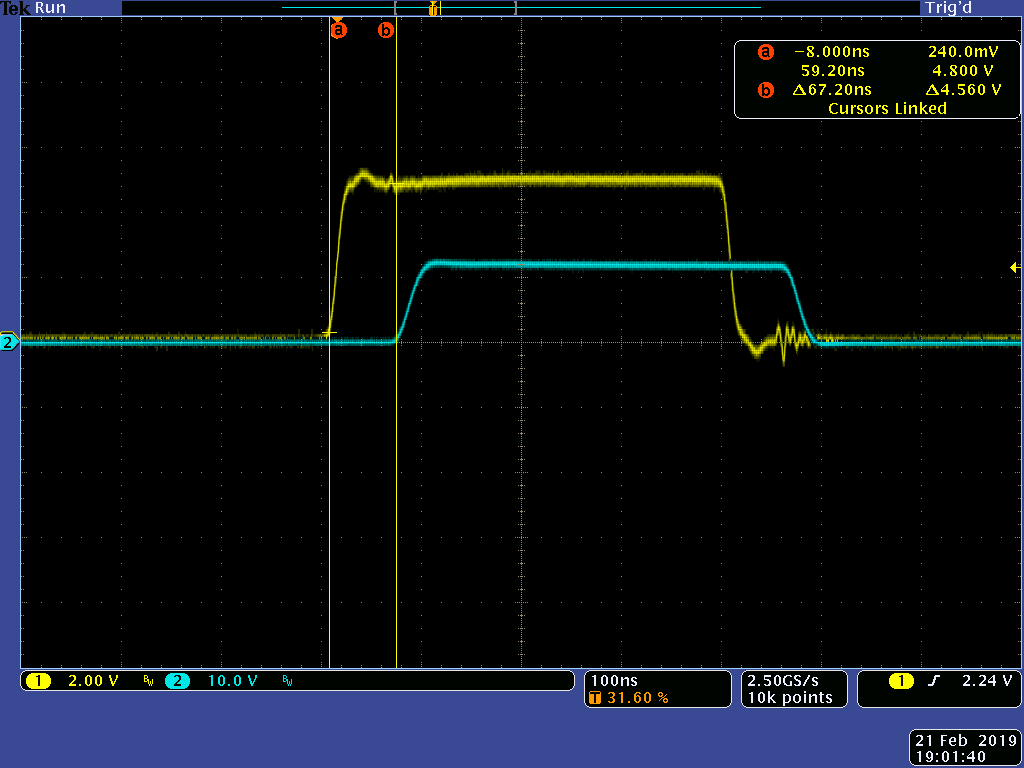Other Parts Discussed in Thread: LMG5200
Hello,
While testing the board at switching frequencies (1 Mhz and 10 MHz) with variable load resistor of 0 to 36.3 ohms, the high side GaN Mosfet failed. I measured the input impedance and it was very low (6 ohm). What might be the reason for this? The datasheet of LMG5200 says that it is possible to switch the transistors up to 10 MHz, so I don't think it is high switching frequency that caused this.
Note: I have replaced the on-board inductor with a planar spiral inductor (single layer) of 280 nH. In the later stages, I have to test with double layer coils with different winding layouts. 
One more question, when I see the output at switching node I cannot see any deadtime generated like shown in the user guide of the evaluation board. So I placed output of the PWM signal from signal generator and Switch node output and tried to measure it. Is it the right way to do so? 
Thank you,
Girish


